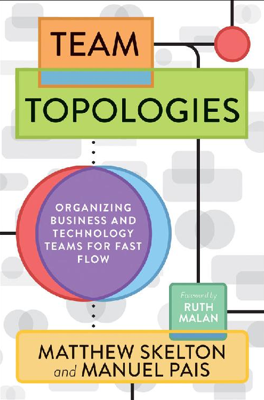Choose Team-First Boundaries
Understanding Team-First Boundaries for Enhanced Software Flow
Leveraging the authority of Eric Evans and insights from the book "Accelerate," this chapter emphasizes that the organization of teams and their interactions significantly impact software functionality and overall flow within systems. In pursuit of a fast flow of changes to software systems, it is critical to eliminate unnecessary hand-offs and align team boundaries directly with the principal streams of organizational change. However, many organizations falter by poorly defining these boundaries, leading to disengagement, confused ownership, and slow delivery.
Aligning Boundaries with Software and Systems Architecture
This chapter introduces methods to delineate clear and effective team boundaries that foster ownership and sustainable development, suitable for both monolithic and loosely coupled systems. These boundaries, referred to as "team-sized," connect directly with team capabilities, significantly enhancing management and evolution of software parts.
Utilizing Domain-Driven Design and Fracture Planes
A core approach discussed is the use of domain-driven design (DDD) and identifying "fracture planes" within software systems. These planes are natural seams akin to fault lines in a stone, which can be split to form distinct responsibilities aligned with business domains. Such strategic segmentation of software not only adheres to Conway's Law by reflecting organizational communication but also facilitates a quicker and more adaptive change process in system architecture.
Challenges of Monolithic Systems and the Value of Decoupling
The text identifies several types of monolithic structures, such as application monoliths, joined-at-the-database monoliths, and monolithic releases, which complicate and slow down the deployment process. The solution lies in breaking down these monoliths into smaller, more manageable units through strategic boundaries or fracture planes, allowing for increased autonomy and reduced inter-dependencies among teams.
Exploring Various Fracture Planes
Different fracture planes are explored to aid organizations in effectively dispersing software systems into productive, manageable segments. These include:
- Business Domain Bounded Context: Focusing on aligning software partitions with specific business functions for clearer role delineation and reduced translations errors.
- Regulatory Compliance: Separating components that need to adhere to specific regulations to simplify compliance processes and limit their scope.
- Change Cadence: Isolating parts of a system that require updates at different frequencies to allow for agility in deployment.
- Team Location and Risk Profiles: Considering geographical distribution and different risk appetites across teams to optimize team distribution and system design.
- Performance Isolation: Designating high-demand system parts for performance optimization without overarching system impacts.
- Technology and User Personas: Addressing different technology needs or customer-driven features segmentation for better focused and customized solutions.
These planes enable organizations to tailor their architectures to support more autonomous, focused, and less burdened teams.
Real-World Application
A practical example from Poppulo demonstrates the successful application of these principles. Here, the importance of aligning software structure with business domains is shown through the company’s transition from a monolith to microservices architecture. By fostering team independence and facilitating direct communication with stakeholders, Poppulo significantly improved its flow of changes and system scalability.
Ultimately, this chapter underscores the critical relationship between effective team organization and technological architecture, asserting that thoughtful consideration of team boundaries and interactions is foundational to agile and efficient software development.
